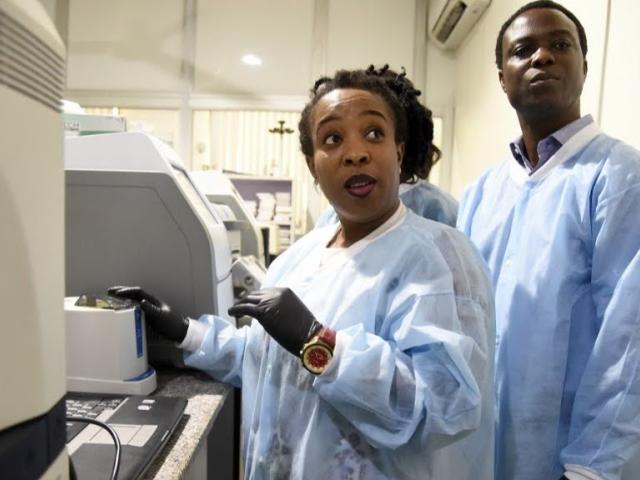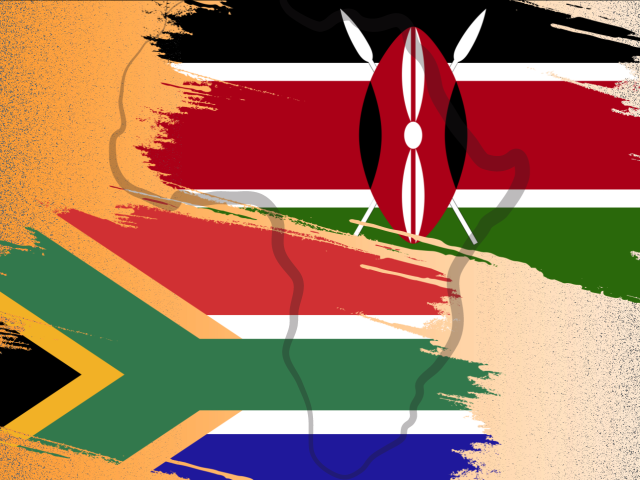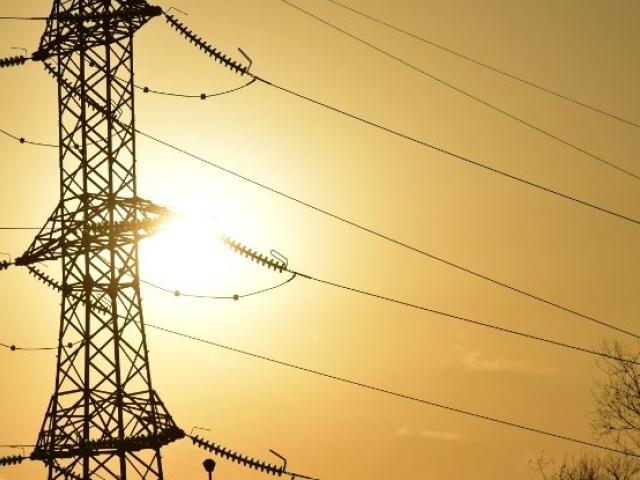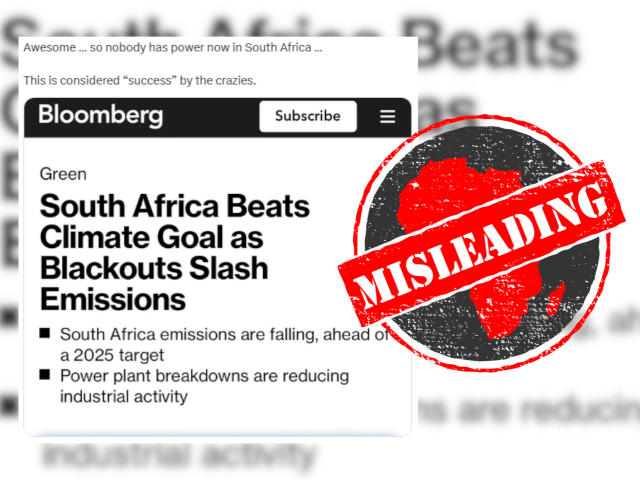-
Ruto was right that climate change has reduced Africa’s agricultural productivity by a third in the last half-century, and that 600 million Africans don’t have access to electricity.
-
He was also correct that nearly a billion people don’t have clean cooking energy, and that African countries pay at least five times the interest rates of other countries when they borrow internationally.
-
But we found no evidence of his claim that 93% of Kenya’s national grid is powered by renewable energy, or about the number of new jobs Africa needs to create every year.
Kenyan president William Ruto hosted the Africa Climate Summit in the capital Nairobi in September, the first of its kind in the region.
Despite the conspicuous absence of major economies such as Nigeria and South Africa, and protests outside the venue, the historic talks resulted in a regional declaration on climate change that pressed for better funding from wealthier nations.
Ruto called for urgent action, including to address food insecurity, create jobs and reduce borrowing costs. In his opening remarks, he made a number of claims to highlight the scale of the problem.
We scrutinised seven for accuracy.
The continent’s decline in agricultural productivity over the past six decades was “a stark reminder for the urgent need for adaptation”, Ruto said.
His spokesperson, Hussein Mohammed, had yet to respond to our request for the president’s evidence for this claim at time of publication.
Go Shimada is a professor at Meiji University in Japan, where he also edits a journal on international development. In 2022, he studied the impact of climate change-related disasters on Africa’s growth and agriculture.
We asked him about productivity. It was “ratio of output to input,” he said. “The output is the agricultural production quantity.”
Shimada said agricultural inputs are the external resources used in crop and livestock production to increase yields. These include labour, fertiliser, seeds, pesticides, technology and water.
Extreme weather conditions such as droughts, floods, rising energy costs, and rising temperatures affect agricultural production.
For the data to verify this claim, Shimada referred us to the World Meteorological Organization (WMO), the United Nations (UN) agency that deals with weather, water and climate.
UN agencies back up claim
The WMO told Africa Check that the statistic comes from a 2022 assessment report by the Intergovernmental Panel on Climate Change (IPCC). The IPCC is a scientific body set up in 1988 to guide research into dealing with climate change.
“Climate change has reduced total agricultural productivity growth in Africa by 34% since 1961, more than in any other region,” the report said, citing a 2021 paper in the journal Nature.
The paper, titled Anthropogenic climate change has slowed global agricultural productivity growth, used data from the Food and Agriculture Organization (FAO), another UN agency.
The WMO also provided us with a factsheet that repeated the statistic, predicting that “future warming will negatively affect food systems in Africa by shortening growing seasons and increasing water stress”.
Prof Ariel Ortiz-Bobea co-authored the journal article. He is an economist at Cornell University in the US and researches agricultural sustainability. When his paper was published, he wrote a series of social media posts explaining the study and made the data and the code available for other researchers to review.
The data covers 47 countries in Africa as classified by the FAO. The remaining seven countries in North Africa are not included in the agency’s “Africa” designation.
We have contacted Ortiz-Bobea for more context. But Ruto’s claim is backed up by credible publicly available data and we rate it correct.
Kenya is an example of what's possible in renewable and reliable energy, said Ruto. He put the national grid – generation, transmission and distribution – at three gigawatts (GW). A watt is a unit of power, and there are a billion watts in every gigawatt. According to one estimate, one GW of electricity has the same power as 1.3 million horses or 100 million light-emitting diode (LED) light bulbs.
Kenya’s national statistics agency regularly publishes figures on power generation. These come from Kenya Power, the country’s electricity utility, and KenGen, the power-generating company.
The agency’s data usually shows the “installed capacity”, defined as the theoretical maximum power output the power system is designed to operate at, and “effective capacity”, which is the maximum power output when the system is operating under existing constraints.
This is measured in megawatts (MW). There are a thousand megawatts in every gigawatt.
Different data sources support claim
The latest data from the agency showed that the country’s installed capacity increased from 2989.6 MW in 2021 to a preliminary figure of 3,321.3 MW in 2022. The effective capacity also increased from 2,857.6 MW to a provisional figure of 2,857.6 MW.
The latest public data from Kenya Power, released in January 2023, showed the country had 3,078 MW on its grid as of 30 June 2022.
The regulator, the Energy and Petroleum Regulatory Authority (Epra), also published data showing that the installed capacity of the grid as of 31 December was 3,321 MW, while the effective capacity was 3,041 MW.
Publicly available data supports Ruto's claim that Kenya's grid is operating at an estimated 3 GW. We therefore rate this claim as correct.
Renewable energy is generated from naturally replenishing sources. These sources include geothermal, wind, solar and hydroelectric power.
Ruto said 93% of the electricity from the national grid is renewable.
The latest Epra generation statistics cover the second half of 2022. They show that renewables account for 73.5% of total installed capacity, and 76.3% of total effective capacity on the grid. (Note: See our calculations here.)
The report also noted: “87.42% of the energy generated in Kenya was obtained from renewable energy resources.”
Source: Epra
Kenya Power’s most recent annual report shows that out of a total of 12,653 gigawatt-hours (gWh) of power bought in the year ending 30 June 2022, 84.3% or 10,667 gWh came from renewable sources.
We have not seen any data to support Ruto’s claim that 93% of Kenya’s electricity comes from renewable sources. We rate the claim incorrect.
The International Energy Agency (IEA) is the global body that provides insight and analysis on energy issues.
For data and how access is defined, the agency told Africa Check to look at the 2023 Guidebook for improved electricity access statistics.
The agency defines access to electricity as a household having enough electricity for basic needs such as lighting, charging phones, and a radio, which equates to about 50 to 75 kilowatt-hours per household per year.
“Households connected to national grids and mini-grids are considered to have access” because they can meet this requirement.
The report specifically notes that 600 million people in Africa have no access to electricity. It cites the 2022 Africa Energy Outlook, a report produced together with organisations such as the African Union.
“In 2021, 43% of the population of Africa, around 600 million people, still lacked access to electricity,” the report noted.
We cross-referenced the IEA data with the world development indicators database curated by the World Bank. The data showed that 50.6% of the population in sub-Saharan Africa had access to electricity in 2021, when the population was 1.18 billion. With 49.4% without electricity, this is 597 million people.
However, there are 48 countries in sub-Saharan Africa. Djibouti is not included as “it is handled administratively as part of the Middle East and North Africa”. Egypt, Libya, Morocco, Algeria and Tunisia are other African countries not included.
Data for the six countries shows that they account for nearly 2.5 million people without electricity, bringing the total number of people without electricity in Africa to nearly 600 million people.
Dr Leonardo Rocha Souza, the chief of the energy statistics division in the department of economic and social affairs in the UN, told Africa Check to check the figures against the energy progress report, which tracks the sustainable development goal on access to energy.
The tracker showed that in 2021, 50% of sub-Saharan Africa – or about 590 million people – had access to electricity. The other half did not.
We therefore rate this claim as correct.
Clean cooking access is when a household reliably uses cooking methods such as natural gas, liquefied petroleum gas (LPG), electricity, bioethanol or biogas that minimise harmful pollutants.
The IEA shared its clean cooking report with us to verify the figure.
“Today, 1 billion people on the continent – roughly four in every five – rely on highly polluting cooking fuels used in open fires or basic stoves,” says the July 2023 report.
Almost half of these people live in just five countries: Nigeria, Ethiopia, the Democratic Republic of the Congo, Tanzania and Uganda.
Souza, the UN statistics division chief, also sent us data showing that in sub-Saharan Africa, only 17.7% of the population, or about 208 million people, had access to clean cooking energy in 2021. That leaves nearly a billion people without.
The latest recent World Bank data shows that in 2021 only 19%, or 224 million of the 1.18 billion people in sub-Saharan Africa, had access to clean cooking energy. That left about 956 million without access.
In Djibouti, only 10% of the total population of 1.1 million in 2021, or 110,000 people, had access to clean cooking energy.
In Algeria, Egypt and Tunisia, 100% of the population has access to clean cooking energy. Morocco is at 98%, leaving only 741,432 people without access in 2021. (Note: No data is available for Libya.)
On the basis of all these figures, we consider this claim to be correct.
Ruto said of the estimate: “These are not just numbers, these are 30 million opportunities to build our future, 30 million dreams that can be fulfilled through climate-proof avenues of growth and 30 million steps towards shared prosperity.”
Dr Louise Fox is a non-resident senior fellow at the US-based global policy thinktank, the Brookings Institution, and has written extensively on labour and jobs in Africa. She was previously chief economist at the US Agency for International Development.
Fox co-authored a book in 2014, Youth Employment in Sub-Saharan Africa, which predicted that the continent’s labour force would grow “by 11 million people per year over the next 10 years”.
In 2021, she explained why the high number of annual jobs needed on the continent was “misleading”.
The main reason, Fox argued in a commentary for Brookings, was that the annual increase in the working-age population was misinterpreted as an increase in the labour force.
“But not everybody of working-age participates in the labour force. And it is the labour force – those who are employed plus those looking for work (unemployed ) – who need jobs,” she wrote.
The working age population is the number of people aged 15 and over, but most 15-year-olds are usually still at school and not available for work.
Issue not so much number of jobs, as quality of jobs, says expert
We contacted Fox, who shared a policy paper she co-authored in 2021 and a document from the African Development Bank. The document puts the number of young people entering the labour market in Africa at 11 to 12 million every year.
For up to date figures, she asked us to check with the International Labour Organization. The UN agency’s key report, World Employment and Social Outlook 2023, showed that Africa’s labour force increased by an average of 14.65 million people between 2019 and 2023.
“The issue is not so much ‘how many jobs are needed’, but how can countries create better jobs for both youth entering the labour market and the older cohorts,” Fox told Africa Check.
In her view, the key issues, which she discussed in her 2021 paper, were:
- how to keep people in school so that they enter the labour force with the right skills, especially women up to the age of 18
- job quality (or the “missing jobs” challenge)
The available data does not support Ruto’s claim.
Ruto described the cost of capital as “the most prohibitive barrier” to Africa’s progress.
“Private investors charge high premiums driven by both real but mostly perceived risks,” he said. “It is not a secret that we are paying at least five times as much as advanced economies to borrow from the financial markets. It’s a fact, documented.”
We found a similar claim in a speech by the secretary-general of the United Nations Conference on Trade and Development, UNCTAD. The speech was given in Nairobi on 16 August 2023.
“... we should remember that African countries pay four times more for borrowing than the US and eight times more than European countries,” said UNCTAD boss Rebeca Grynspan.
The UN agency referred Africa Check to its July 2023 report, A World of Debt. The report shows that while Germany borrowed at 1.5% interest rates and the US borrowed at 3.1%, Africa borrowed on average at 11.6% from the global financial markets.
“Countries in Africa borrow on average at rates that are four times higher than those of the United States and even eight times higher than those of Germany,” reads the report.
It continued: “High borrowing costs make it difficult for developing countries to fund important investments, which in turn further undermines debt sustainability and progress towards sustainable development,”
A 2015 journal article examining the borrowing rates of African countries found that these countries paid unexplained “higher-than-normal coupon rates” on private sovereign bond markets.
Higher interest rates attributed to investor bias against Africa
“Higher coupon payments that cannot be explained by observable measures of risk can only be attributed to investor bias against African governments,” says a policy brief of the UN Economic Commission for Africa (Uneca).
The author of the brief, Dr Nadia Ouedraogo, referred Africa Check to this 2023 Uneca paper on debt and finance in Africa as the source of her data.
She said the risk premium paid by African countries was influenced by various factors, including their overall economic situation, their governing institutions and their ability to repay debts.
The study accounted “for all these different variables and found that the African countries pay a higher premium” which couldn’t be justified by these criteria alone. Instead, it appeared to be influenced by less clear-cut, potentially subjective factors, Ouedraogo said.
Ruto’s claim is backed by the evidence, we therefore rate it correct.









Add new comment